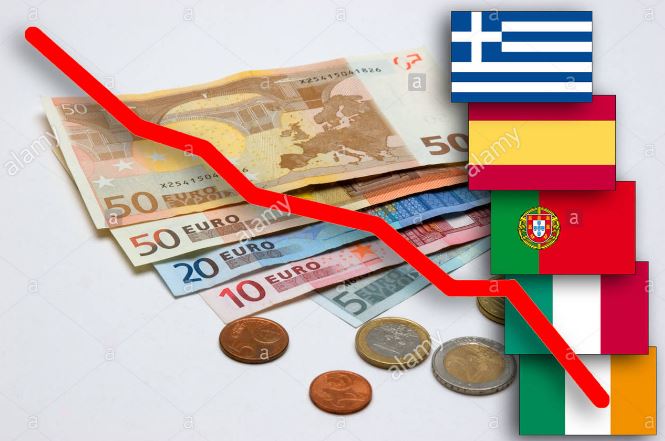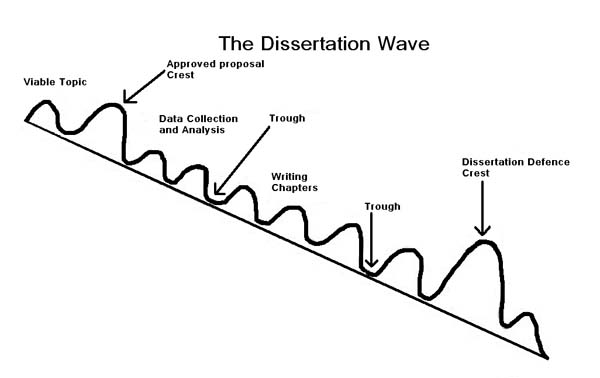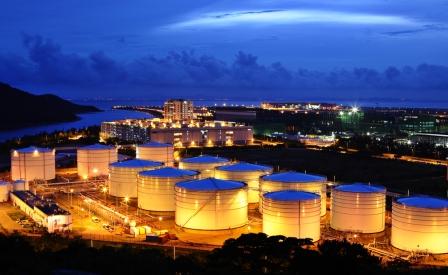Currency Crisis
Currency crises are rapid and unpredictable decline in the value of the currency of a nation. The crises are often more severe if the country involved uses a fixed exchange rate than if the country has a flexible exchange rate since the monetary authority will be forced to abandon the fixed rate. Currency crises usually increase by selling pressure of a currency and can only be remedied through devaluation or establishing a new exchange rate at a sufficiently depreciated level. Several countries have experienced currency crises which are caused by different factors. One of the most severe currency crisis occurred in Mexico between 1994 and 1995. The crises led to huge massive economic crises that forced the Mexican government to seek assistance from the United States and the International Monetary Fund (IMF) (Carbaugh, 2016). The essay herein will, therefore, examine the sources of currency crises in Mexico and the specific resolution and also including some other countries that have experienced currency crisis such as Russia and Turkey.
Mexico Currency Crisis (1994-1995)
Before the 1994 Mexico currency crises, the central bank of Mexico maintained the value of peso within a depreciated band of four percent every year against the U.S. dollar. In 1994, the Central bank decided to issue debt that is linked to the US dollar as a way to reduce interest rates on debts. The debts kept rising until it exceeded the central bank’s falling foreign exchange reserves which led to the currency crises. Despite the government responding by devaluing the currency by 15 percent, the crises continued until 1995. The continued selling pressure on the currency forced the monetary authorities to withdraw support in foreign exchange markets as foreign reserves of the Bank of Mexico fell. Although the severity of the Mexican currency crisis in 1994 was unprecedented, Mexico’s history on exchange rate policy has been characterized by the duration of both fixed exchange rate and flexible exchange rates (Ötker et al., 1995). The devaluation registered by Mexico is the largest depreciation of the currency of a country within one year.
When the currency crises occurred, there was little information about the possibility of its occurrence. The crises were somehow similar to the debt crisis that occurred between 1982 and 1983. Several assessments have been conducted to establish the main cause of the situation, and most of them reveal that it was contributed by the exchange rate policy of Mexican monetary authorities. The other cause identified through the assessment is the excessive use of short maturity tesobonos for deficit financing. Tesobonos is a peso-dominated bond which is issued by the government of Mexico and the coupons associated with it are indexed to the United States dollar. The Mexican government issued the tesobonos as a way to convince the international investors to buy Mexican debt that is exempted from risks associated with currency exchange. The investors are therefore immune to the effects of changes in the dollar value of the peso between the period of purchase and redemption. The risk associated with the change of currency is therefore carried by the Mexican government and not the investors. For instance, if the value of peso depreciated during the period of purchase and redemption, the Mexican government and the taxpayers would be liable for the losses.
According to the international economic statistics that were available before the crises, the Mexican government had the chance to evade the crises if the monetary authorities had information about the actual state of Mexican reserves. At the beginning of 1994, the Mexican reserves were at around $25 billion, but towards the ends of the year, the reserves had reduced to about $5 billion (Tavlas, 1997). The existing reserves were insufficient to meet the existing financial obligations. Furthermore, a default was considered to be a perilous move for the stability of the international financial markets. The deficit, therefore, led to the currency crisis. The International Monetary Fund (IMF) failed to provide the Mexican authorities with information about the decline in the reserves. Following the crisis, the IMF has resolved to closely monitor the financial reserves of developing countries to avert the occurrence of a currency crisis. The IMF has also resorted to providing early warning indicators to avoid the occurrence of a currency crisis in any nation.

Mexico has a great deal of the forms of direct capital investment in 1994, but it was not sufficient. The government was receiving massive amounts of money through stock-brokers who were motivated by the quick returns which were about 20 percent annually. The investment bankers and the stock-brokers were ready to exit Mexico as soon as the crisis begun thereby increasing the magnitude of economic damage. The troubles of Mexico extended from insufficient reserves, inability to service the debts, and incapability to generate profits on the equity capital. The crises also contributed to other social and political problems such as the Chiaspas rebellion at the beginning of 1994 (Tavlas, 1997). The political issues made the foreign investors take their money out of Mexico thereby broadening the implications of the crisis. The implications of the crises forced the Mexican government to seek assistance from the International Monetary Fund and the United States government.
According to Gil-Diaz (1998), the currency crisis in Mexico was contributed by the execution of the privation of the public enterprises and the deregulation of the Mexican banking sector. He concluded that the confiscation of the banking sector followed by subsequent privatization in 1991-1992 is the cause of the currency crisis. The Mexican monetary authorities made the deregulation of the banking sector without due consideration about the implications that it would have on the federal reserves. The decision later resulted in an increase in unpaid debts to the banks. The currency was then triggered by the Mexican government in 1994 because of the economic decisions. The crisis was determined by the fragility of the banking system and not the macroeconomic factors as indicators by other researchers. Three years before the crisis, the Mexican peso was overvalued which also resulted in economic pressure. The monetary policy that was passed by the Mexican authorities was inappropriate because the Federal Reserve was raising the interest rate while the Bank of Mexico maintained the existing rates. It, therefore, made the investors leave increasing pressure on the reserves.
The Mexican currency crisis had a regional effect through a contagion in various markets such as Brazil, Argentina, Asia, and Thailand; the effect was referred to as the “Tequila effect.” The crisis affected both the stock market and the foreign exchange market. Only the countries that had high economic fundamentals were exempted from the effects of the crisis. The Mexican government responded to the adverse situation by requesting for loans from different countries and international bodies among them being the United States, the International Monetary Fund, and the Bank for International Settlements. In the end, Mexican government managed to secure a loan totaling to $50billion that was used to meet the financial obligations. However, the move by the government to ask for loans received criticism from some of the European authorities that considered the move to be a moral hazard.
The Mexican government continued to resolve the crisis by implementing a severe adjustment program. Some of the strategies in the program included reducing the public spending, increasing the value added tax from 10 percent to 15 percent, and raising the prices of all the public goods and services. The program worsened the situation in Mexico as the Gross Domestic Product dropped by 6.5 percent and inflation increased by 50 percent. Furthermore, the banking system collapsed thereby forcing the government to use public funds in the rescue. The government also changed the exchange rate from fixed to flexible. Later, a law was passed that would only allow the government budget to be approved if the deficit is zero to prevent further lending. The initiative had positive implications in the GDP because of the increased exports of products to the United States. Through the Banking Fund for the Protection of Savings, the government was able to bail out the banking system that had collapsed. Years later, the government decided to sell the Mexican banks to the international financial groups. Presently, there is only one Mexican bank as foreign investors own the rest.
One of the international institutions that played a role in rescuing Mexico was the International Monetary Fund. The IMF is responsible for providing loans to nations that are in financial deficit. The loans are usually issued following an agreement between the nation and IMF. The IMF responded to the crisis by providing a loan to the Mexican government through the U.S Treasury as a way to protect the foreign banks and other existing financial institutions. The various government also played a vital role in rescuing the currency crisis among them being the United States and Canada. The U.S. has had a long outstanding relationship with Mexico, and it is also the largest trading partner. Although the Federal Service Bank contributed to the crisis by increasing the interest rate, the United States assisted the Mexican government with loans to end the crisis. On the other hand, Canadian government through the North American Framework Agreement (NAFA) contributed funds beyond what had been collected at the time of occurrence of the crisis.
Russia Currency Crisis (1998)
Russia was severely hit by a currency crisis in 1998 that left both the economic and financial system in crisis. According to Gerry & Li (2002), the financial crisis begun in August 1997 when the Russian government defaulted on its domestic financial and economic systems. The duration was characterized by an increase in inflation, high levels of unemployment, and shanking of the economy. Although the crisis lasted for a short period, Russian who was living in the urban areas were severely hit. Globalization and uncontrolled speculation in the financial markets is one of the leading contributors to a currency crisis in the developing countries. The rise in the amount of capital that is flowing in the international financial systems as a result of globalization has had negative impacts on the economies of different countries. The crisis is caused by failures of certain sectors of the economy in the countries involved which later spreads to other countries through contagion and spill-over effects. For instance, the Asian currency crisis spread through contagion and spillovers to other countries such as Thailand in 1997 and later to Russia in 1998. Therefore, Asia is one of the causes of the Russian crisis although research shows that there is a little linkage between the crises that hit the two countries.
The Russian crisis can also be attributed to both political and economic factors. The Russian government triggered the crisis by selling the GKOs and OFZs which denominated debt instruments and coupon bonds after the fall of USSR. The Russian government then started experiencing problems that had negative implications on both the financial and the economic systems. The Russian government responded by converting the Ruble dominated instruments into US dollar-dominated Eurobonds to alleviate the risks involved. The Russian government continued borrowing from external sources that later raised concerns of its default exposure as foreign investors decided to cut their connection with the Russian debt, equity, and commodity market because of lack of confidence. The withdrawal of investors from Russia economy reduced the government capability to finance the debts thereby causing a currency crisis. According to the reports provided by the Economic Intelligence Unit (1998) in 1998, 30 percent of the Russian expenditure was used to service the short-term debts that the government had secured from other governments and international institutions. Therefore, high levels of debts are one of the causes of a currency crisis in Russia.
Russian Currency crisis was also caused nu the fall in the value of the Rule, weak banking system, and the reduction in the level of the foreign reserves. The Russian government tried to remedy the situation through the Central Bank by pegging the Russian Ruble to the US dollar with a narrow band. Several other studies have been conducted to establish the causes of the Russian financial crisis which had serious consequences to the economic and financial systems of other countries such as Turkey, Ukraine, and Moldova. The devaluation of the Russian Ruble also had negative implications on the Russia banks regarding assets and liabilities. There was also a reduction in the foreign exchange contracts because of the increase in the value of liabilities. Furthermore, the Russian government debts such as bonds and treasury bills that were used assets were reduced to worthless assets because of the defaults. As a result, most banks were closed which made a majority of the Russians to lose their savings. Lastly, the crisis caused political fallouts and frequent demonstrations of workers who were demanding a pay rise (Margolin, 2000).
The Russian currency crisis was resolved after intervention by the International Monetary Fund (IMF) which has the mandate of monitoring the economic and development policies enacted by various nations. The other responsibilities of the international body are to lend money to countries that are experiencing financial challenges and provision of technical assistance regarding research and training to countries that are in need. The IMF intervened in the Russian crisis by lending money that would help the government to escape the financial collapse. Despite the IMF lending money to the Russian government, the situation was already out of control since the money could only be used to take care of the short-term debts but not offer a permanent solution to the difficult situation.
For a country to survive a financial crisis, it requires a plan for the aid to be used in a manner that will help escape the situation. It is an excellent idea for the international body to issue financial aid, but the Russian government was not prepared to use the funds to evade the crisis. The government had lost control of the situation, and therefore it required more than financial aid to help the situations. The Russian government responded by coming up with a plan that would ensure the crisis does not happen again. The funds issued by the IMF were used in rescuing the banking system which plays a vital role in maintaining economic growth in a nation.
Conclusion
A currency crisis is one of the challenges that has been experienced by several countries especially the developing countries. Among the countries that have been affected by currency crisis include Mexico between 1994 and 1995, Russia in 1998, and Thailand in 1997. The crisis has severe implications on the economic and financial systems of an economy. The causes of the crisis vary from one nation to another, for instance, the crisis in Mexico was caused by reducing the level of Federal Reserve while excessive borrowing caused the Russian crisis. Once the countries are caught in such difficult situations, it the responsibility of the international bodies and other government to assist in escaping the situation. International Monetary Fund played a vital role in helping the above-discussed countries escape the harsh implication of currency crisis. The United States and Canada through the North American Framework Agreement (NAFA) assisted Mexico financial aid in helping rescue the situation.
References
Carbaugh, R. (2016). International Economics. Boston, MA: Cengage Learning.
Economist Intelligence Unit (1998). Russia: Country Report. London. pp. 42.
Gery, C. J. & Li, C. A. 2002. Vulnerability to welfare change during economic shocks: evidence from the 1998 Russian Crisis. Working Paper. University of Essex, Department of Economics, Discussion Papers.
Gil-Díaz, F. (1998). The Origin of Mexico’s 1994 Financial Crisis. Cato Journal, 17 (3), pp. 303-313.
Margolin, R. (2000). The Russian Financial Crisis: from craze to crash. The Stern Journal, New York University.
Ötker, I., Pazarbaşioğlu, C., International Monetary Fund, & International Monetary Fund. (1995). Speculative attacks and currency crisis: The Mexican experience. Washington, D.C.: International Monetary Fund, Treasurer’s Dept. and Monetary and Exchange Affairs Dept.
Tavlas, G. S. (1997). The Collapse of Exchange Rate Regimes: Causes, Consequences and Policy Responses. Boston, MA: Springer US.
Other Relevant Blog Posts
Circular Flow Model Economics Report
Did you find any useful knowledge relating to currency crises in this post? What are the key facts that grabbed your attention? Let us know in the comments. Thank you.


